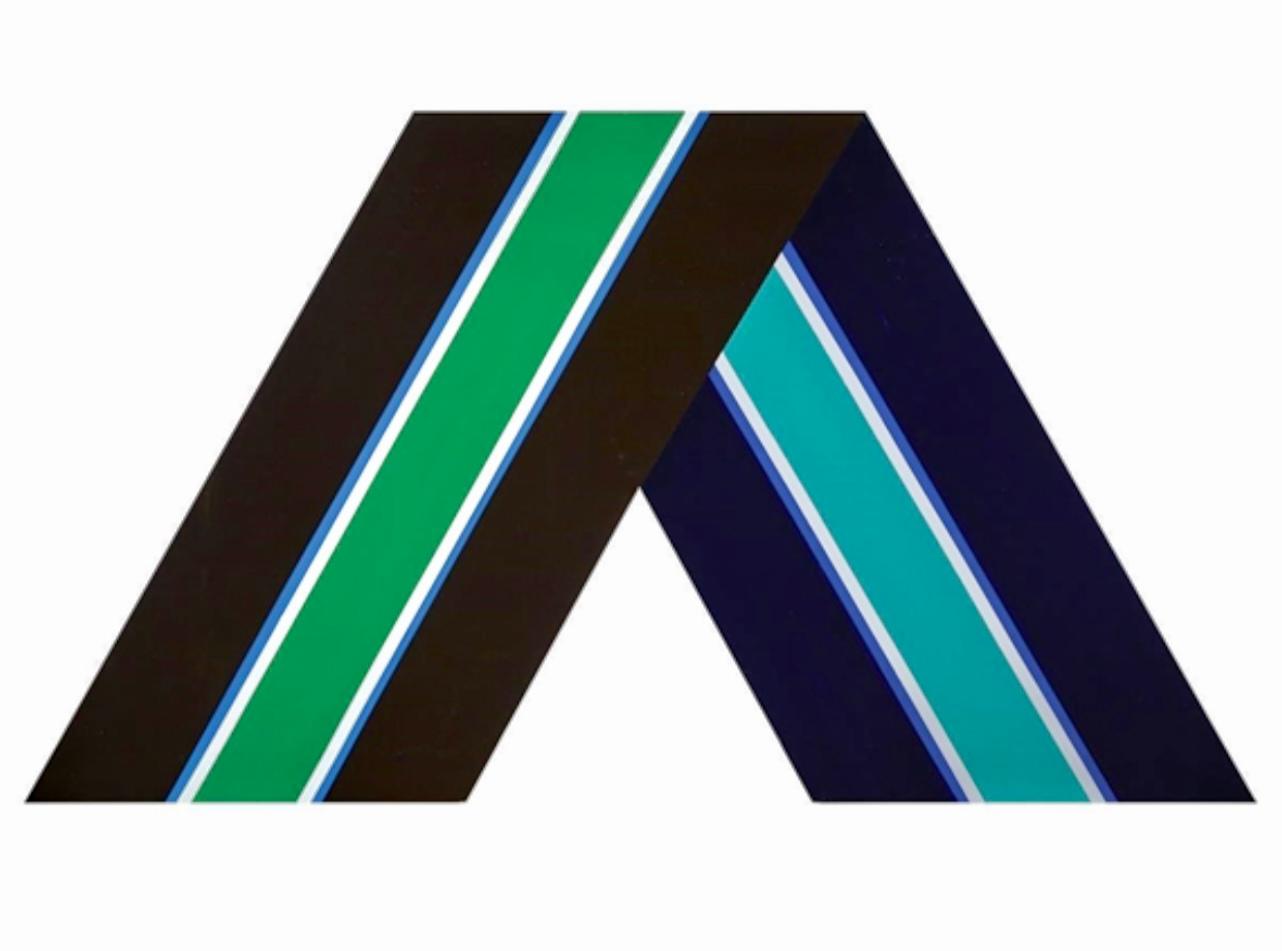Reg HOLMES (1934-)
"The lie is the reality"
1969
Format;20x20 in
Acrylique sur toile
VENDU \ SOLD
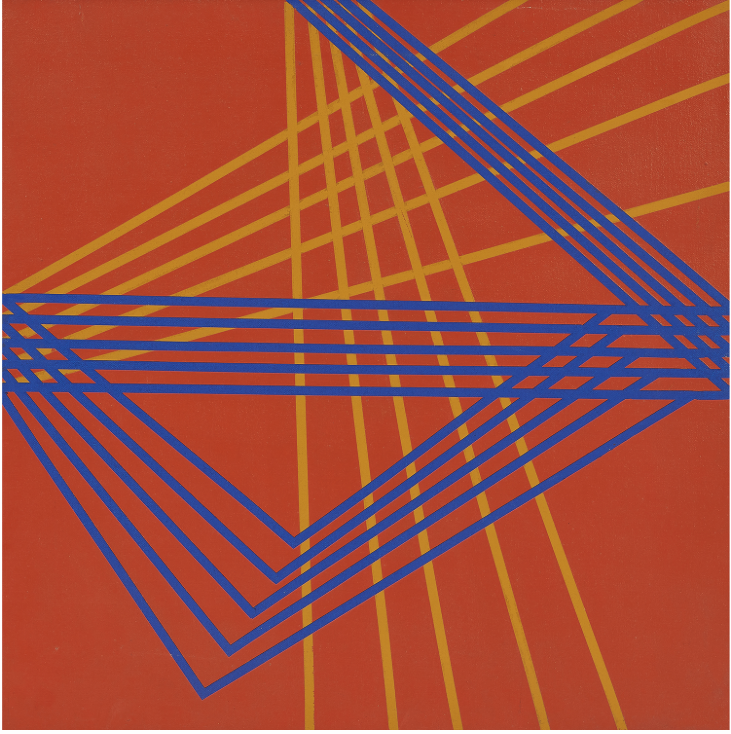
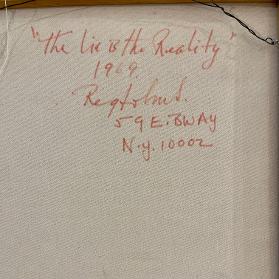
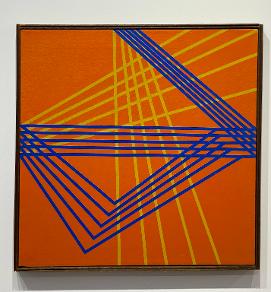
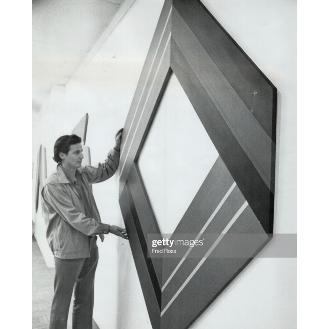
Reg Holmes is a Canadian Post War & Contemporary artist who was born in 1934. Reginald Holmes is known for abstract, landscape and non-objective painting, teaching. Modern painters in the mid-20th century challenged the definition and parameters of painting by emphasizing the flatness of the picture plane, thereby shattering the art form as a realist escape by calling attention to the act of painting itself and the materiality of the medium. Reg Holmes (b.1934) takes this radicalism many steps further by entirely refiguring the canvas, as seen here in this lot. A shaped canvas forces the viewer to redefine our notion of what a painting is or can be. Massive in scale, the adjacent geometric cells are rendered in characteristic flatness but paradoxically create an impressive optical illusion. Rendered with sharp lines and contrasting colours, the work removes all notion of the natural world. Holmes attended the Vancouver School of Art in the mid-1950s, and later taught painting and silkscreening at the Vancouver School of Art in the early 1960s when the principal instructors were notable artists Orville Fischer, Fred Amess, Peter Aspell, Donald Jarvis, Roy Kiyooka, Reg Holmes and Jack Shadbolt. He moved to New York in 1967 where he lived and painted until returning to Canada in 1975.
A colleague of renowned Abstract Expressionist, Jack Shadbolt, Holmes was part of the new generation of Vancouver artists experimenting with themes in contemporary art in the early 1960s, bringing radical ideas of color, pop art abstraction and form to the public eye at the same time that Vancouver was becoming a burgeoning artistic center. Shaped canvases are paintings that depart from the normal flat, rectangular configuration. Canvases may be shaped by altering their outline, while retaining their flatness. Peter Laszlo Peri created polychromatic “cut-out” paintings as part of the Constructivist movement between 1921 and 1924. These works were exhibited widely in the 1920’s with Laszlo Moholy-Nagy at Der Sturm Gallery, Berlin, 1922 and 1923, and at the International Exhibition of Modern Art assembled by Societe Anonyme Brooklyn Museum, New York, 1926. Between the late 1950s through the mid-1960s Jasper Johns experimented with shaped and compartmentalized canvases, notably with his 'Three Flags' painting – one canvas placed on top of another, larger canvas. Robert Rauschenberg's experimental assemblages and "combines" of the 1950s also explored variations of divided and shaped canvas. Argentine artist Lucio Fontana also began early on the experiment in shaped and compartmentalized canvases with his Concetto Spaziale, Attese series in 1959. Frances Colpitt ("The Shape of Painting in the 1960s"; Art Journal, Spring 1991) states flatly that "the shaped canvas was the dominant form of abstract painting in the 1960s". Frank Stella, Kenneth Noland, Ellsworth Kelly, Barnett Newman, Charles Hinman, Sven Lukin, Ronald Davis, Richard Tuttle, Leo Valledor, Neil Williams, John Levee, David Novros, Robert Mangold, Gary Stephan, Paul Mogensen, Clark Murray, and Al Loving are examples of artists associated with the use of the shaped canvas during the period beginning in the early 1960s. Geometric abstract artists, minimalists, and hard-edge painters may, for example, elect to use the edges of the image to define the shape of the painting rather than accepting the rectangular format. In fact, the use of the shaped canvas is primarily associated with paintings of the 1960s and 1970s that are coolly abstract, formalistic, geometrical, objective, rationalistic, clean-lined, brashly sharp-edged, or minimalist in character.
SOLD / VENDU
"Trojo"
1977
Format 24 x 25 in
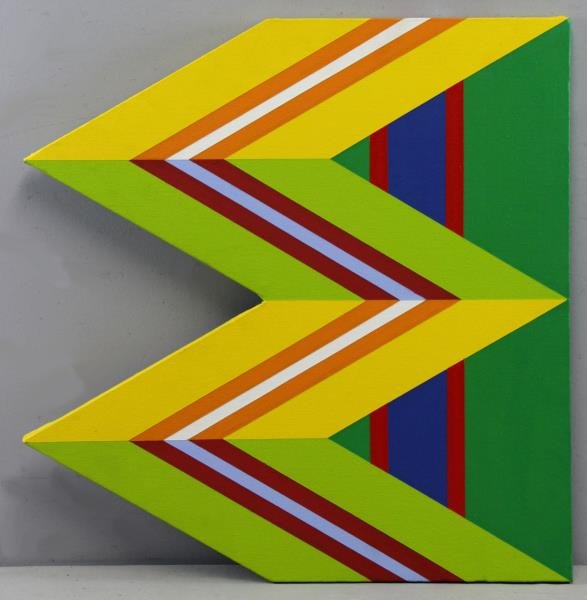
"One folded space"
1966
Format 54 x 30 in
Provenance: The Isaacs Gallery, Toronto
